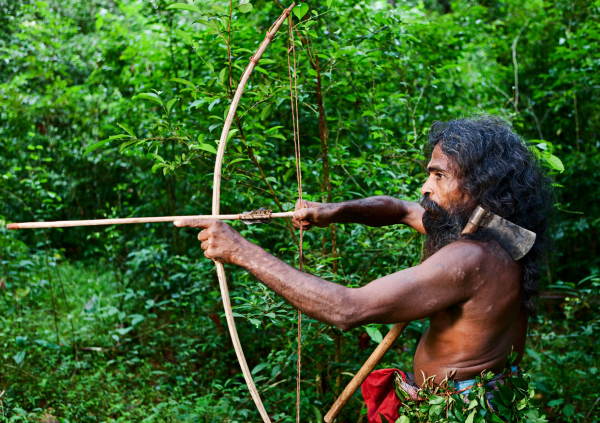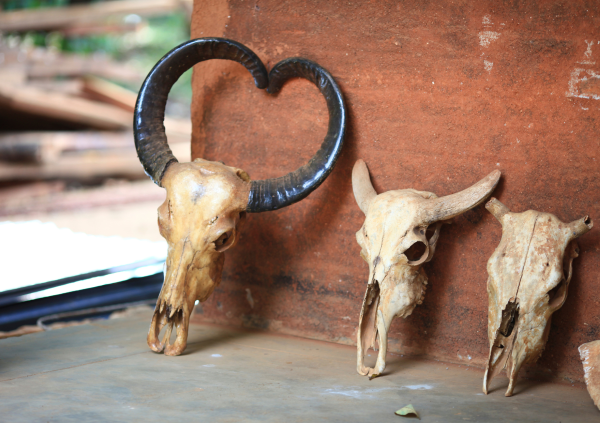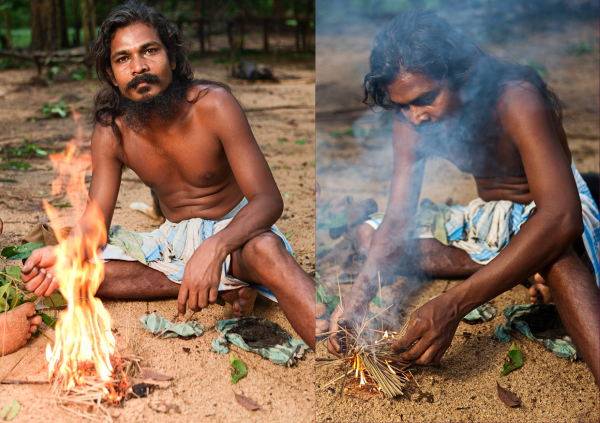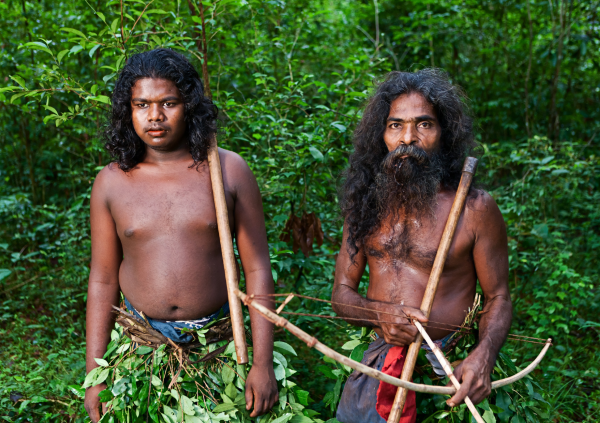The oldest existing ethnic group in Sri Lanka – Vedda
– by Nadeeka – eLanka

The last Adivasi population in Sri Lanka is the Vedi people. Scholars believe that their existence dates back to 16,000 BC. But since the legends about their existence have not been fully documented, we examine this based on two theories.
According to the Mahawanshaya, they are descended from the direct descendants of Vijaya, the first king in Lanka history who came from India. The people of the country were constantly oppressed by the misbehavior of Prince Vijaya, the eldest son of King Sinhabhahu in India. Also, Prince Vijaya had 500 companions to support him.No matter how much King Sinhabhahu reprimanded, there was no lack of actions of Prince Vijaya. So finally, In the end, King Sinhabhahu chased Prince Vijaya’s 500 companions out of India in ships. This group reached the shores of Tambapanni in Lanka.
The eldest daughter of the demon grotika leader who was there saw Kuvenia and fell in love with her. Also, with the help of Prince Vijaya Kuveniya, he killed the demons and became the king of Sri Lanka. He made Kuvenia his queen. From this marriage, they had one daughter and one son.
As time passed, Prince Vijaya wanted to be the king of all of Lanka. For that, a royal princess had to be married to get the coronation, but because Kuveniya was a tribal girl, Vijaya told Kuveniya to leave the two children in the palace. Kuveniya was very disappointed and left the palace with her children Although she went back to her tribe with her two children, they beat her and chased her away for supporting the killing of the demons. Due to severe heartache, Kuveniya committed suicide and the two children fled to the forest and hid there to live. Sinhalese history shows that this Vedi generation started from those two children.
The other opinion is that according to archeological and anthropological factors, their history is much earlier than that, dating back to the Stone Age.
The Vedi people, who had been living freely for thousands of years, slowly began to adapt to the colonialists. Due to the civil war conditions, modernization, deforestation and the decline of interest of young people in their old habits, Sinhala and Tamil customs slowly became familiar to them.
They mostly lived around the Mahiangana area. But due to the population of those areas’ day by day, Veddans had to get used to modern ways instead of old customs. Buddha Vahansa’s first journey to Sri Lanka took place in this Mahiangana area. Mahiangana Dagaba, a sacred shrine in Sri Lanka, is also located here.
However, another group of Vedi who did not want to give up their old customs went further into the forest and later Maduru Oya National Forest Park was named as a Vedi reserve. Today, Adi Vasi Folk Heritage Madyastan, Rathugala has made it possible for you to see their customs and lifestyle.
Food
Granted, hunting is the way of life of the Veddas, hunting animals using bows and arrows provides them with the food they need. It is roasted and eaten. Honey is also used to flavor and preserve food, and this natural wild honey is very tasty. If you visit the tribal people, don’t forget to taste the honey.


Clothes
Early vadda used to Leaves of trees and branches. After some time was men who wore a small cloth tied with a string and women wore a cloth from waist to ankles. Today, that dress is more common and men are dressed in a saran, while the women’s dress is covered with a piece of cloth from the chest to the ankles.

Language
The Vedics have a unique language and it is known as a language that has gradually evolved since ancient times. No specific source has been identified for the origin of the original Vedic language. The Vedi language has completely different words from the Sinhala language and has received a slight influence from the Sinhala language.
Examples:-
Botakada (Elephant)
cancuna (bull)
Makini (spider)
Potti (bee fly)
Religion
One of the main forms of worship of the Veddas is the worship of deceased relatives. Their religious beliefs are primarily related to the fulfillment of life cycle and related matters. The Vedi people, who practiced Sinhalese customs, have religious rituals associated with Buddhism, while the Tamilized Vedi people practice Hindu-influenced practices. Kataragama Pudabima and Kandy Dalada Palace are some of the places where they come to worship.
(C) Copyright eLanka – Please email info@eLanka.com.au if you wish to reproduce this article in your website or other digital media







